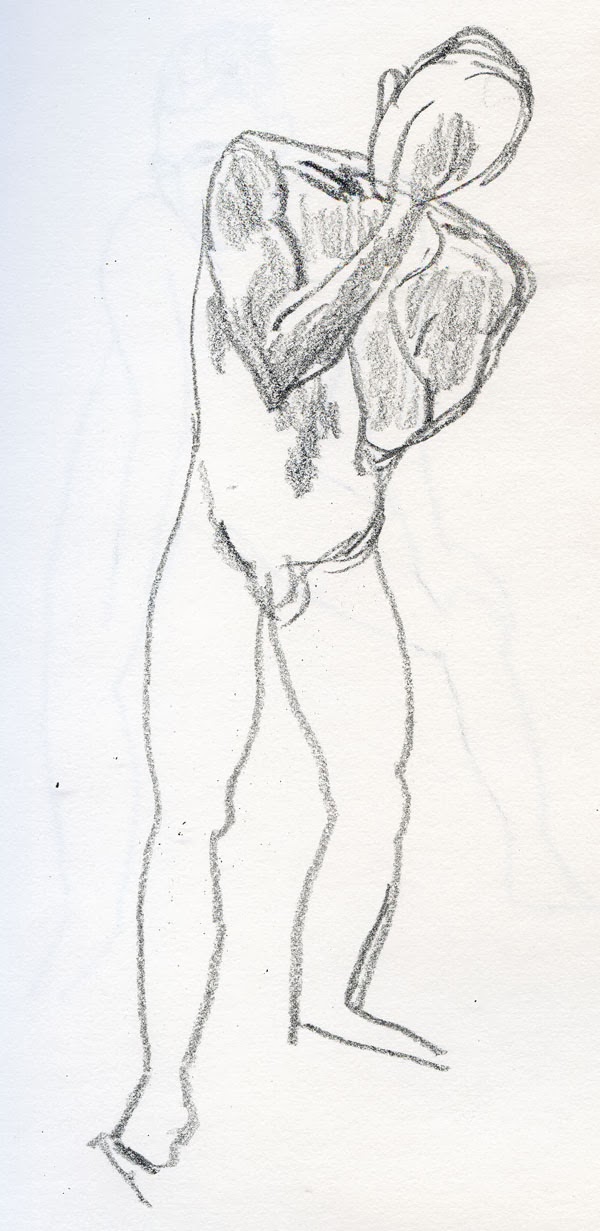 |
| Pilot Petit1 Mini (left) and Platinum Preppy |
What is it with cheap fountain pens?
A while back I noticed the ridiculously inexpensive fountain
pens on the market, even from highly regarded manufacturers that also make
high-end pens. Are they just a way to bring in a new audience used to buying
rollerballs and ballpoints for a few bucks? Or could they possibly be any good?
I had to find out. I used the under-$10 sorting on JetPens.com
and picked out some Platinum Preppys
and Pilot Petit1 Minis for less than
$4 each. (I also got a Pilot Plumix
for $7.25, but its tiny, annoying screw-on cap kept me from using it beyond the
first scribble.) Both the Preppy and the Petit1 Mini turned out to be solid sketching
and writing pens (although I found the Preppys to have inconsistent nib
quality: Of the five I bought, three had good nibs, and two were scratchy). If
luring in fresh victims to the fountain pen market is the goal, I’d say these
inexpensive starters are probably successful.
All of this is preamble to today’s test results, which are
about waterproof Platinum Carbon Black ink – a tough ink in terms of idleness. The same pigment-based qualities
that make the ink excellent to use with water media also tend to clog up fountain
pens. Because I use Platinum Carbon regularly in the field, I don’t usually
leave a pen filled with it idle for long, but occasionally the one on my desk
gets left unused for a couple of weeks at a time, so it was worth testing. Here’s
what I did:
On Feb. 7, 2014, I filled a Platinum Preppy and a Pilot
Petit1 Mini with Platinum Carbon ink. I stored both in a cup, nib pointing up,
and left them untouched until yesterday, Feb. 21, when I wrote with each. The
Preppy stuttered a bit at first, but it was still able to write immediately.
I gave the pen a shake (the cartridge contains an agitator), and it smoothed
out considerably – completely, actually. I could write with it without flushing
it at all.
The Petit1 tested even more impressively: not scratchy or
skippy at all, even on the first stroke! That’s two full weeks of standing
upright with waterproof ink in it! For $3.80!
So what is it about cheap pens that makes them perform unexpectedly well in terms of idleness? Maybe the manufacturers want them to appeal to those
ballpoint/rollerball crossovers, so they know the pens have to be idle-ready? I’m
curious, but ultimately, it doesn’t matter. The upshot is that in circumstances
when I might need to keep a pen idle for a while (a spare while traveling, in my fitness-walking bag, in my studio
during the summer when I hardly sketch indoors), these under-$4 pens will be my
go-to’s.
Here’s the full list of my recent idle fountain pen tests
and related product reviews referenced above:
Fountain Pen Idleness Updates: Pilot Metropolitan and Petit1
Updated 6/21/14: It’s official: Both the Preppy and the Petit1 have idle times that are practically indefinite, and the Petit1 is the all-time champ! Both have been filled with Platinum Carbon ever since my test in February, standing nib end up in a cup since then, completely forgotten. Today I saw them and gave each a scribble, expecting them to be completely dried up. The Preppy stuttered just a bit at first, just like it did during my test – but after that, it was as smooth as ever. The Petit1? Smooth from the very first scribble, no stutter at all. I’d say that’s stellar performance for a fountain pen that costs less than than 4 bucks!























.jpg)






















